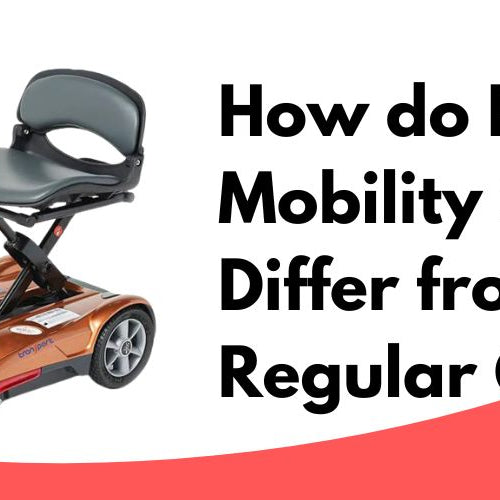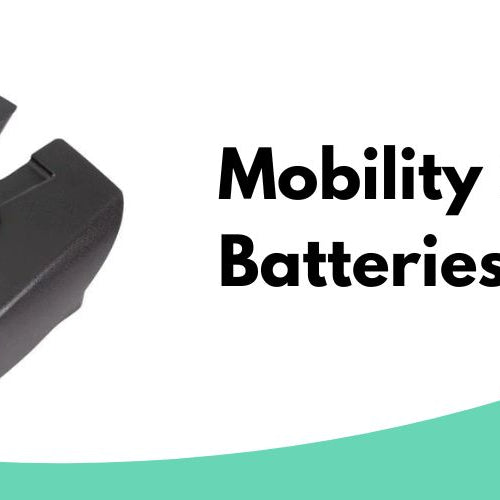The lifespan of a mobility scooter battery plays a crucial role in determining the reliability and convenience of these essential devices. On average, the lifetime of these batteries ranges from 18 months to three years. The actual longevity is influenced by several factors, including the frequency of use and how well the battery is maintained. Regular users who depend on their mobility scooters for daily activities will generally find they need to replace their batteries around every one-and-a-half to two years.
Batteries for mobility scooters come in different types, such as sealed lead-acid (SLA) and lithium-ion. SLA batteries are commonly used but have a shorter lifespan compared to lithium-ion batteries, which offer a longer life span and quicker charging capabilities. To maximize the life of a mobility scooter battery, it is advisable to charge the battery after each use, which ensures it's ready for the next day’s activities and helps maintain its health over time.
Despite proper care and regular charging, all batteries will eventually degrade in their capacity to hold a charge. It is important for users to monitor their mobility scooter's battery performance to ensure their scooter remains reliable and ready to use. With correct handling and an understanding of the factors that affect the battery lifespan, users can optimize the performance and longevity of their mobility scooter batteries.
Understanding Mobility Scooter Batteries

Mobility scooters provide essential support for individuals with limited mobility, and the performance of these scooters hinges on the quality and condition of their batteries. The type of battery, its capacity, and how it's charged significantly influence both the range of the scooter and the longevity of the battery itself.
Types of Batteries
There are three main types of batteries used in mobility scooters: lead-acid batteries, gel batteries, and lithium-ion batteries.
-
Lead-acid batteries are common and cost-effective but are heavier and require regular maintenance.
-
Gel batteries, a subtype of AGM (Absorbent Glass Mat) batteries, are sealed, maintenance-free, and offer good performance in varying temperatures.
-
Lithium-ion batteries are the lightest and have a longer lifespan but come at a higher cost.
Each type has its advantages and trade-offs concerning performance, maintenance, lifespan, and cost.
Battery Capacity and Size
The capacity of a battery, usually measured in ampere-hours (Ah), directly correlates with the scooter's range. Larger batteries with higher capacity can store more energy, allowing scooters to travel further on a single charge. However, increased battery size can add to the scooter's weight and might require longer charging times.
Charging Cycles and Battery Life
-
Charging cycle: A full charge to discharge and back to full charge is counted as one charging cycle.
-
Lifespan of a mobility scooter battery: Varies significantly based on the battery type and usage, ranging typically between 18 to 48 months.
Careful charging practices—such as charging after each use and avoiding storage with an empty charge—can prolong battery life. It's important to follow the manufacturer's guidelines on charging cycles to maximize the battery's lifespan.
In summary, choosing the appropriate battery type, understanding its capacity, and adhering to proper charging cycles play pivotal roles in maintaining the scooter's reliability and extending the usable life of the battery.
Factors Affecting Battery Longevity

The durability of a mobility scooter's battery hinges upon several critical factors. Ensuring optimal battery health involves regular maintenance, appropriate storage conditions, and mindful usage and charging routines.
Battery Care and Maintenance
Routine maintenance is crucial for battery longevity. Owners should regularly check the battery’s terminals and connections for cleanliness and secure fitting. It's vital to follow the manufacturer’s guidelines for proper charging and to service the battery as recommended.
Temperature and Storage Conditions
Batteries are sensitive to the environment; ideal storage conditions can significantly extend their life. Batteries should be kept in a cool, dry place to prevent capacity loss. Exposure to extreme temperatures, both hot and cold, can degrade battery performance and lifespan.
Frequency of Use and Charging Habits
Lastly, how often a scooter is used and its batteries charged plays a substantial role. Frequent use requires more frequent charging, which can wear down a battery faster. Adopting good charging habits—like avoiding full depletion before recharging and not leaving the battery at 100% for extended periods—can help to prolong battery life.
Operational Influences on Battery Life
Several factors inherent to the operation of a mobility scooter can affect its battery life. The weight carried by the scooter, the types of terrain it traverses, and the manner in which it is driven influence the longevity of the battery and overall performance.
Weight and Load Impact
Heavy loads can cause a mobility scooter's battery to deplete more quickly. As the weight on the scooter increases, including the user's weight and any additional cargo, the battery works harder to maintain performance, leading to faster energy consumption. It is important for users to adhere to the manufacturer's specified weight limit to optimize the battery life.
Terrain and Travel Distance
The type of terrain covered by the mobility scooter impacts its battery life significantly. Driving on rough terrain like grass, gravel, or inclines requires more power, which can drain the battery at a quicker rate. As for travel distance, longer trips between charges result in more battery cycles, which can affect the battery's long-term capacity.
Driving Style and Scooter Performance
Frequent stop-start driving can reduce the efficiency of a scooter's battery due to the increased energy demands of accelerating. Likewise, consistently driving at the scooter's maximum speed can hasten battery depletion. Users should consider a steady, moderate speed to make the most efficient use of their scooter's battery. The scooter model itself also plays a role, as certain models are designed with efficiency in mind to ensure optimal battery usage.
Charging Your Mobility Scooter Battery
Efficient charging of a mobility scooter battery is essential to maintain both the battery's lifespan and the scooter’s performance. This section will detail the charging techniques and best practices to ensure the longevity of your scooter’s power source, as well as how to understand the charge and discharge rates that affect battery health.
Charging Techniques and Best Practices
When charging a mobility scooter battery, one should employ smart chargers that are designed to prevent overcharging. A smart charger will typically indicate when the battery is fully charged, usually switching from a red light to green. To charge a mobility scooter battery:
-
Plug the charger into the scooter and then into an electrical outlet.
-
Monitor the charging process, ensuring that the battery charges for the required amount of time.
-
Disconnect the charger once the battery is fully charged.
Best practices include:
- Charging the battery after each use; for daily riders, this ensures a full charge for the next day and contributes to battery health.
- Avoiding the storage of SLA batteries in a discharged state, as this could shorten their lifespan.
Note: Always use the charger that comes with the scooter or one that the manufacturer recommends.
Understanding Charge and Discharge Rates
The health and longevity of a scooter's battery are highly influenced by both charge and discharge rates. A battery's charge rate is the speed at which it can recharge, while the discharge rate refers to how quickly power is consumed during use.
-
Charge Time: Varies depending on battery size and charger output; usually, a minimum of 8 hours is recommended for a full charge.
-
Discharge Rates: These can be impacted by factors like the weight of the user, the terrain, and the scooter's efficiency.
It's vital to understand that repeated deep discharges can reduce a battery's overall lifespan. Therefore, users should avoid allowing batteries to become completely depleted before recharging. Regular and complete charging cycles can help maintain the optimal capacity of the battery.
Maximizing Battery Performance
To ensure that a mobility scooter is always ready for use and operates at peak efficiency, one must manage both the immediate and long-term performance of the battery carefully. By doing so, users can enjoy longer run time per charge and extend the overall battery life.
Optimizing Battery Power on a Single Charge
-
Avoid Excessive Weight: Extra weight can cause the motor to work harder, thereby draining the battery more quickly. Users should carry only what they need.
-
Regular Maintenance: Keeping the scooter in good condition, such as ensuring the tires are inflated to the proper level, can reduce unnecessary power drain from factors like increased rolling resistance.
-
Smooth Riding Practices: Avoid frequent stops and starts, and ride at a steady pace to maximise the scooter's range on a single charge.
-
Monitor Battery Levels: Frequent checks can prevent a situation where the battery is fully depleted, which can lead to decreased power capacity.
Strategies for Prolonged Battery Lifespan
-
Charge Cycles and Habits: Recharging batteries after each use can maintain their effectiveness and prevent the reduced range associated with deep discharge cycles.
-
Temperature Considerations: Batteries should be stored and charged in a temperature-controlled environment to prevent damage from extreme cold or heat, which can shorten their lifespan.
-
Vibration Exposure: Secure the scooter to minimize vibrations during usage or transport, as excessive shaking can affect battery life.
-
Regular Charging Routine: Keeping batteries charged and avoiding long periods of non-use can prolong their functional lifespan due to the nature of battery chemistry.
Employing these strategies ensures that the mobility scooter always functions reliably, reducing the likelihood of inconvenience caused by power issues.
Recognizing When to Replace Your Battery
Replacing a mobility scooter's battery at the right time is crucial to ensure continuous and reliable use. Understanding the signs of battery deterioration and evaluating the health of the battery can save costs and prevent inconvenient breakdowns.
Signs of Battery Deterioration
-
Reduced Range: When the battery pack no longer holds enough charge to meet the scooter's usual range, it's one of the most noticeable signs that the battery is losing capacity.
-
Extended Charging Times: Batteries that require considerably longer to charge than they did initially may be nearing the end of their lifecycle.
-
Inconsistent Performance: If the scooter experiences power fluctuations or cannot maintain speed, the battery may be struggling to deliver consistent power.
Evaluating Battery Health
-
Voltage Tests: Using a voltmeter to check the battery's voltage when fully charged and after use can indicate health; significant deviations from the manufacturer's specified voltage may suggest it's time for a replacement.
-
Physical Inspection: Swelling, leaks, or corrosion around the terminals are red flags that require immediate attention.
-
Service Recommendations: Most manufacturers recommend specific service intervals to check battery health. Keeping to this schedule helps in timely detection of potential issues.
It is recommended to consult the manufacturer's guidelines for the specific model and battery type regarding replacement intervals and warranty coverage. A proactive approach in monitoring a mobility scooter's battery health ensures optimal performance and longevity.
Conclusion
The lifespan of a mobility scooter battery is influenced by various factors, including the type of battery, maintenance routine, and frequency of use. Typically, batteries for mobility scooters endure between 18 months to 3 years but may extend up to 5 years when well-maintained.
Key points to ensure longevity of mobility scooter batteries:
-
Maintenance: Regular cleaning and inspection can prevent buildup of dirt and corrosion.
-
Charging Habits: Consistent, correct charging practices are crucial.
For independence and long-distance use: Users of long-distance mobility scooters should pay closer attention to battery care. Preserving the battery’s health is essential for maintaining their independence.
Recommendations:
- Charge the battery after each use.
- Avoid complete discharges when possible.
- Store the battery in a cool, dry place and avoid temperature extremes.
Proper usage frequency and care directly correlate to the battery's effective life. By adhering to the best practices for cleaning and charging, users can maximize the service life of their mobility scooter batteries.
Frequently Asked Questions
In this section, crucial information concerning the lifespan of mobility scooter batteries is explored through a series of commonly asked questions.
What factors affect the lifespan of a mobility scooter battery?
The lifespan of a mobility scooter battery is influenced by several factors including the frequency of use, the charging habits, and the environmental conditions under which it is stored and operated.
Can the longevity of mobility scooter batteries vary between brands or models?
Yes, the longevity of mobility scooter batteries can vary between different brands or models due to differences in battery technology and quality of the components used.
What maintenance practices extend the life of mobility scooter batteries?
Regular charging after use, avoiding deep discharge, and storing batteries at a moderate temperature can significantly extend their lifespan. It's also essential to follow the manufacturer’s maintenance guidelines.
How can I determine if my mobility scooter battery needs replacement?
A mobility scooter battery may need replacement if it holds less charge than usual, takes longer to charge, or the scooter’s performance has noticeably decreased.
What is the expected life span of a lithium battery in a mobility scooter compared to other battery types?
Lithium batteries in mobility scooters usually offer a longer lifespan compared to traditional sealed lead-acid batteries, potentially lasting several years with appropriate care.
What should be considered when selecting a mobility scooter for longer battery life and range?
When selecting a mobility scooter, one should consider the type of battery, its capacity, the efficiency of the scooter's power system, and the estimated battery cycle life as they all contribute to longer battery life and range.








Leave a comment